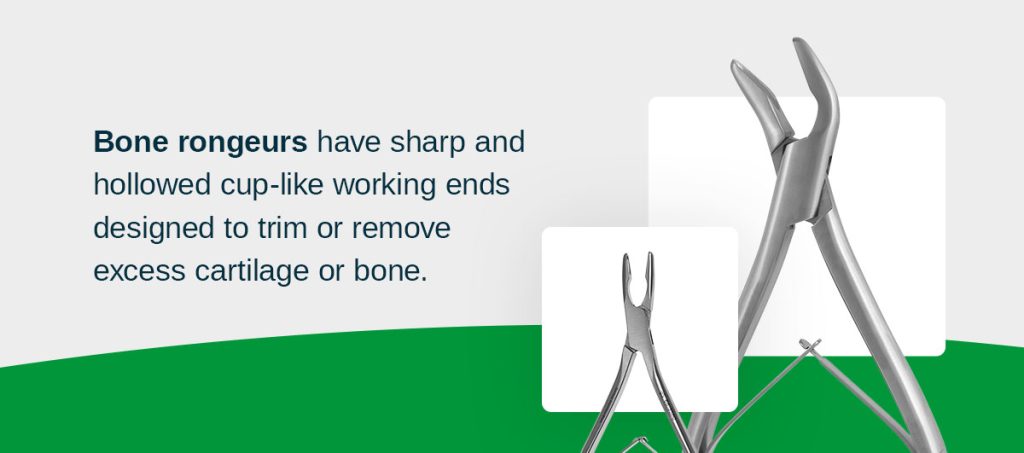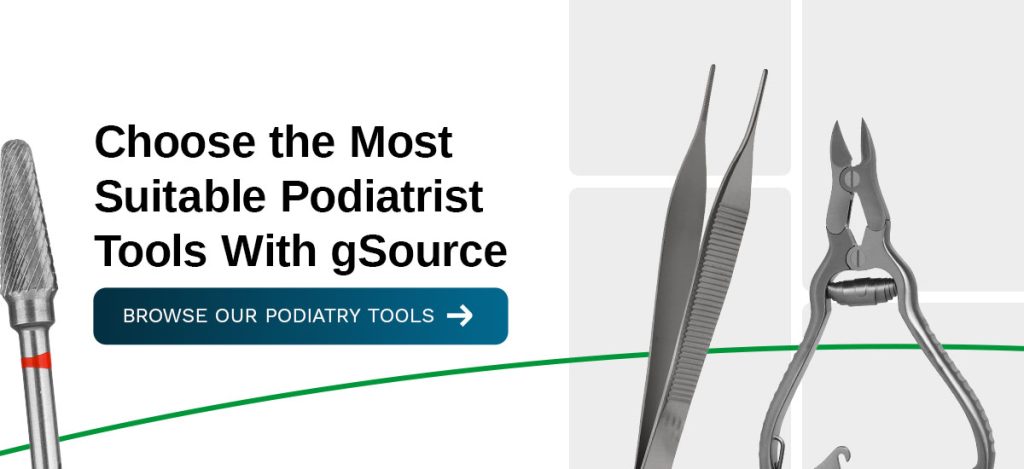
From examinations to surgeries, various specialized podiatrist tools help maintain optimal patient foot health. These tools are essential for providing pain relief, reducing complications, preventing infections and promoting an increased quality of life. This guide explores the most common instruments podiatrists use, where to get them and how to choose the best podiatrist tools.
Podiatrists use various tools with specific purposes. As a podiatrist, you’ll use them to diagnose, examine and treat patients. The more commonly used instruments are typically those used for surgeries. However, even these may vary depending on what the podiatrist specializes in and their practice setting. For instance, they may use different ankle, foot and nail tools, respectively.
Podiatrists purchase their tools from medical solutions companies and medical instrument manufacturing companies. Some of the best providers are those that partner with numerous accredited and certified suppliers to provide high-quality instruments that are durable and improve precision.
Some best practices for purchasing podiatry instruments include:
Here are some of the most commonly used professional podiatrist tools and their uses in feet and ankle procedures.
Toenail nippers are specialized clippers that have sharp curved blades that allow podiatrists to perform required actions more accurately. Nail nippers can be useful for podiatrists in many situations. In most cases, they use them to manage ingrown toenails and trim nails while protecting the delicate skin underneath. Nail nippers can also remove dead or soft tissues like nail edges, callouses, damaged cuticles, ulcers and warts.
In some cases, podiatrists will need to split ingrown toenails longitudinally to alleviate pressure. This requires surgical nail splitters. Podiatrists may have a range of these depending on their patients. For example, they may require a short jaw style nail splitter for cutting thick nails and they may require a tapered jaw style with fine pointed tips for splitting thinner nails.
There are various types of forceps in podiatry that serve different purposes. For instance, tissue forceps help podiatrists grasp and move tissues with gentleness, precision and security, while dressing forceps help podiatrists change dressings and hold dressing materials like gauze and cotton. There are also sponge forceps that aid podiatrists in holding sponges and swabs.

rongeurs have sharp and hollowed cup-like working ends designed to trim or remove excess cartilage or bone. Offering precise bone shaping and resection, this specialized instrument is often used in procedures like bone spur removal, osteotomies and bunionectomy. Podiatrists may use bone rongeurs of various styles and sizes depending on the type of bone and its size.
Burs, otherwise called podiatric drills or rotary tools, are specialized tools needed to perform bone procedures like osteotomies, remove corns and debride fungal nails. These can either be used to shape bone surfaces or make holes in bones. Podiatrists also use them for procedures that require bone grafting, bony prominence removal and hardware placement.
Surgical scissors in podiatry can serve different purposes during procedures based on their primary features. Different types can be used for cutting and trimming tissues, dressings and sutures. Stitch scissors for removing sutures can either be hooked or curved blades for efficient use. There are also cartilage scissors for cutting cartilage and tendons.
Another essential podiatrist tool includes anesthesia tools, which allow podiatrists to properly administer anesthetics to numb the operation area when handling ingrown toenails. This is important for providing patients with a pain-free procedure. These tools can involve anesthetic vials, syringes and needles.
Nail curettes are specialized tools with a small, curved scoop-like tip typically leveraged for removing infected tissue and debris from wounds or nail beds. Its small design allows for precise and controlled movement and removal, helping to create a healthier space for the nail to grow.
In procedures where podiatrists need to remove corns and calluses and perform other nail surgeries, scalpels and blades may help professionals to make precise incisions. These can often come in different shapes and sizes depending on their purpose. While some knives may be curved and thicker, others may have a sharp concave edge.
Suction devices can be crucial for certain procedures when podiatrists need to remove blood and fluids from the operation area. This ensures that surgeons have a clear view of the area throughout the procedure and improves the precision of their actions.
